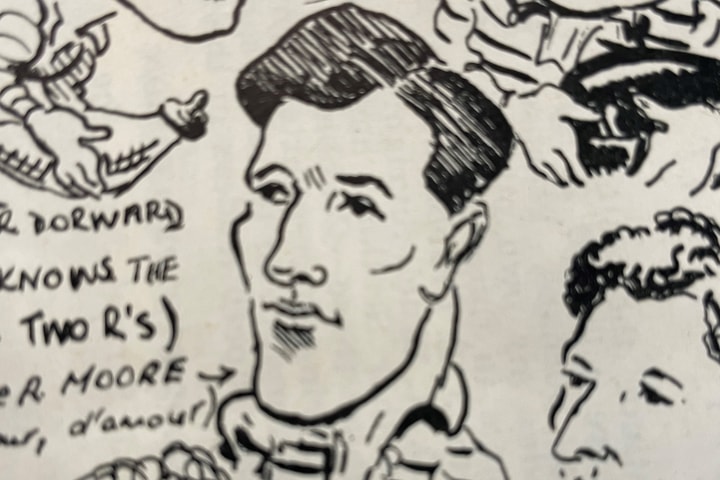
21 November 2025


George Pugh was born in Glebe, Sydney on 16 January 1890 and won his only Australian test cap against the United States of America on the Wallabies North American tour of 1912. It was the final game of a 16-match tour, three matches in Canada and 13 in California and Nevada, and was played in front of 10,000 spectators on the ground of the University of California, Berkeley. The test was hard fought and Australia came close to losing it. The USA led 5-0 at half-time and then extended their lead to 8-0 early in the second half. In the last 20 minutes, the Australians recovered and scored three tries to lead narrowly by 9-8 with just minutes remaining. The final penalty goal by their captain Ward Prentice gave the Australians a far from convincing win by 12-8. Pugh had come to prominence as a hard working forward for the Newtown club which went through the entire 1910 district season unbeaten. He represented New South Wales Waratahs six times in 1911 including three state matches against Queensland and scored two tries. His performances during the 1911 season led to his selection in the touring party for the 1912 North America tour, but he did not appear in any representative rugby after he returned from America.
For many years very little was known of Pugh's life after the North American tour and his name did not appear in any list of Australian rugby internationals who died in the 1st World War. Even the magisterial history of New South Wales rugby by John Mulford from 2005 does not list Pugh among the WW1 war dead. However, Sean Fagan's recent researches and the increasing availability of online historical records and newspapers have definitively established that George Pugh was killed by a mortar bomb on 5 September 1916 in Belgium while fighting with the 4th Australian Battalion. The Sydney weekly newspaper 'The Referee' supplies most of the details we have of his wartime service. On 8 March 1916, Newtown's captain, Ralph Hill, reported that he had received news from George Pugh, whom the paper described as "the brilliant Interstate forward": "I (George Pugh) have joined my battalion. Have met lots of old friends, including Rugger men in Billy Watson, Tom Lee, Tom Richards, Eric Fisher, Sid Middleton, and Dos Wallach. The list is too long to remember. It puts you in mind of a football tour, as they all seem to be here. No omissions by the selectors on this trip. I have had two games of Rugby. We have a fairly good side in our battalion. We could get a good Australian representative team out of the two divisions. The trouble in arranging matches is grounds. Sand, gravel, and pebbles are the main contributions.' All seemed well but on 26 September 1916, The Referee reported:
"Mrs. R. Pugh, of Victoria-street, Marrickville, has received news that her son, Lieut. C. H. (incorrect initials) Pugh, has been killed in action in France. He was educated at the Fort-street Public School. In 1908 he was a member of the winning team in the Roth Challenge Shield for live-saving. He was a leading member of the Sydney Swimming Club, and also a prominent Rugby Union footballer. In 1912 he visited America with an Australian Rugby Union team. He enlisted in July, 1915, with the 4th Battalion, and left Sydney in the following October as second lieutenant. In France recently he took part in two charges at Pozieres, and was promoted to the rank of first lieutenant. Recently a letter was received in Sydney from him, saying that he had been appointed acting captain on the staff."
Sources:
About the Author - A professional musician and arts administrator, Richard Steele has had a life-long love of sport. He has been on the committee of the World Rugby Museum at Twickenham since 2005.
Follow the World Rugby Museum on Facebook, Twitter and Instagram.